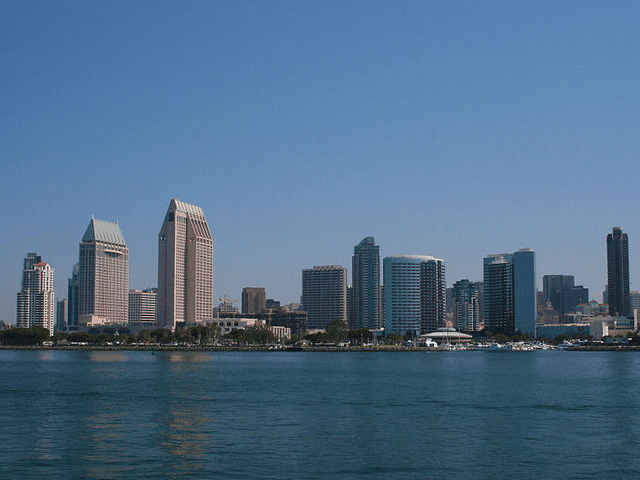San Diego, which refers to itself as “America’s Finest City,” seems to have the hottest economy in the Western United States. After years of financial and political turmoil that almost resulted in the eighth-largest U.S. city filing for bankruptcy, the San Diego local economy is off to a roaring start in 2015.
The University of San Diego publishes an Index of Leading Economic Indicators each month, and January’s barometer of the economy rose an unusually strong +1.4 percent, the biggest gain in four years. The key measures that include unemployment claims, consumer confidence, local stock prices and housing activity were all headed in a positive direction. After bottoming out in March 2009 at a grim 100.7 during the Financial Crisis, the index has continuously powered up to 134.2 at the end of January.
University of San Diego Professor of Economist Alan Gin told the San Diego Union-Tribune, “Everything was just hitting on all cylinders during the month.” He said the strong local economic momentum will power through at least the end of 2015. Here are the numbers:
- Building permits were up +1.34 percent in January, which is traditionally one of the slowest months of the year. Developers booked 750 permits to build new housing units. Pent-up demand for single family homes continued to outpace multifamily dwellings rental unit permits.
- The barometer for unemployment insurance climbed +2.51 percent, which should drive San Diego unemployment rate down from the current 5.6 percent to 5 percent by year’s end.
- The “help wanted” advertising index boomed at a plus +2.44 percent. At this pace, San Diego will add at least +40,000 new jobs this year, up from +34,000 in 2014.
- Local company stock prices index gained +0.85 percent on the index. San Diego-based publicly traded companies had a positive January, despite the overall stock market averages being down during the month.
- The consumer confidence index rose by +0.89 percent, mostly due to falling unemployment. The crash in gasoline prices at the pump also acted like a large tax cut, sending San Diegans to the malls to shop till they dropped in January. Gin does warn that consumer confidence could be a problem in February, with fuel prices jumping by nearly a dollar.
- The national economy index being up +0.49 percent was an added impetus for growth during the month. Despite losing steam from the ripping +5 percent growth rate last fall, the +2.2 percent fourth quarter gain was still a positive.
San Diego may be all economic butterflies and rainbows today, but seven years ago the New York Times dubbed the city “Enron by the Sea.” The backroom deals between local city fathers and powerful public sector unions created a massive financial mess that peaked with the financial crisis.
In Paradise Plundered, University of California San Diego political-science Professor Steve Erie describes how featherbedding and greed drove the City of San Diego to brink of bankruptcy before voters ejected the old guard and elected Republican Jerry Sanders, former commander of the San Diego SWAT team, as Mayor.
Despite being a former member of the police union, he eliminated pension spiking–which allowed employees to collecting supplemental pension checks–in 2007. He also ended the ability for employees to pocket a pension check and continue working for a paid salary simultaneously. Sanders also hammered out a deal with labor unions significantly reducing the size of pension payments for workers hired after June 30, 2009, and forced across-the-board union concessions requiring that employees pay more pension costs.
Erie’s book notes that despite playing hardball with union “give backs’, the City of San Diego is still saddled with a nearly $2.2 billion pension deficit; $1.8 billion in future payments for retired workers’ health benefits; and a $900 million backlog for street, sewer and building repairs.
Yet after a decade of pain and restructuring, the economy in “America’s Finest City” is roaring.

COMMENTS
Please let us know if you're having issues with commenting.